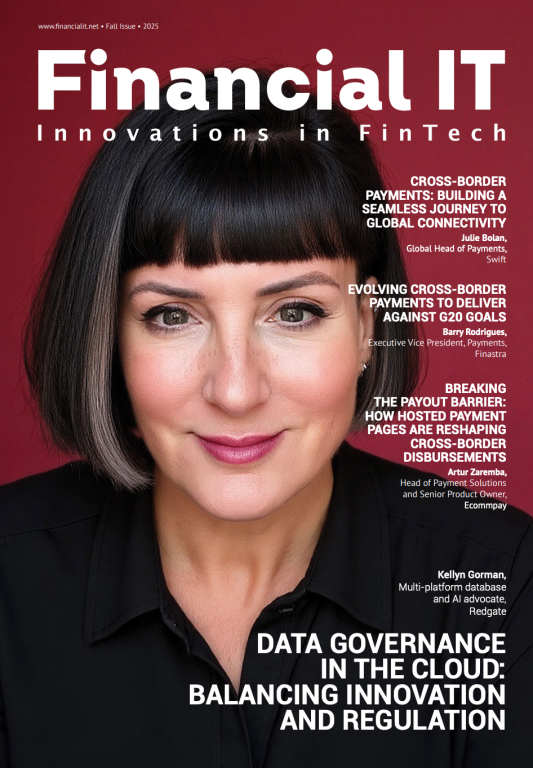How Public Blockchains Are Maturing To Meet The Needs Of Financial Institutions

- Markus Infanger, SVP at RippleX
- 24.06.2025 02:15 pm #PublicBlockchains #TokenizedAssets
The UK is seeing positive signs when it comes to institutional blockchain adoption, with tokenised real-world assets (RWAs) and decentralised liquidity markets being major drivers of the industry's growth. Boston Consulting Group predicts that the global market will reach $19 trillion by 2033, driven by increasing institutional demand for efficiency, liquidity, and transparency.
The UK’s regulatory landscape is evolving to support digital asset innovation, with new cryptoasset rules expected from the Financial Conduct Authority (FCA) this year, providing financial institutions with the necessary clarity to engage with blockchain technology. At the same time, many institutional pilots such as Kinexys, Goldman Sachs and SIX Digital Exchange are currently only operating in private environments, which serve to restrict liquidity, security, and interoperability.
Public blockchains offer an effective alternative to private blockchains, providing a foundation to bring traditional financial assets onchain. They deliver operational efficiencies, enhanced security, verifiable trust, and new revenue opportunities. While many blockchains are open and permissionless, others integrate permissioned elements to ensure compliance and controlled access, with regulatory frameworks like the EU's Markets in Crypto-Assets (MiCA) Regulation providing essential clarity to support public blockchain adoption, growth, and stability.
Which leads us to a key question: How are public blockchains maturing to support innovation in the industry?
From walled gardens to open markets – why institutions are moving onchain
Institutions have historically debated whether private or public blockchains offer the right balance between security, control, and accessibility. But now, as regulations provide greater certainty, financial institutions are increasingly choosing public blockchains such as BlackRock, Franklin Templeton, aberdeen and others because they offer easier scalability, access to broader networks and liquidity streams, and built-in tools for privacy, user protection, and secure transaction execution.
As institutions increasingly hold and exchange a variety of assets onchain, they need access to real-time, accurate data to ensure each asset is valued correctly and that transactions run smoothly. Public blockchains use features like price oracles to bring outside information—such as live stablecoin prices—directly onchain. Unlike private blockchains, which operate in isolated environments, public networks enable more reliable and efficient data flows, supporting better operational decision-making.
Importantly, public blockchains also provide institutions with new revenue opportunities and drive market expansion through enabling fractional asset ownership. Also known as tokenisation, this is the digitisation of traditional assets like treasuries, bonds, commodities and real estate, and enables banks to attract new, previously inaccessible capital, and buy, sell and exchange assets in a fast and seamless way. They can also offer collateralised loans with increased security and efficiency. And with programmability, institutions can create new types of financial products or features that go beyond what’s possible in traditional systems.
Empowering growth with a transparent regulatory landscape
With global regulation evolving over the last few years, public blockchains have continued to mature, increasing their relevance to financial institutions. Those operating across Europe, for instance, can now benefit from clearly defined rules thanks to MiCA, Europe’s landmark crypto framework, which supports safe and sustainable investment in public blockchains. MiCA enables organisations to passport crypto solutions across the continent, reducing market fragmentation, and establishes standards for how digital assets are issued, managed, and traded onchain. This means that financial institutions can confidently use public blockchains to scale their services and unlock new, compliant innovation.
In addition, public blockchains increasingly offer enhanced compliance features, particularly around fraud prevention and regulatory alignment—that help institutions meet regional requirements. On the XRP Ledger, this includes the ability to reverse transactions in specific cases, restrict asset movement when needed, and verify identities through Know Your Customer (KYC) checks—giving institutions more control and confidence when operating in a decentralized environment.
Unleashing the next wave of revenue on public blockchains
Financial institutions are beginning to leverage public blockchains not only to improve operational efficiency, but to access new revenue-generating opportunities through tokenised products and services. Digital asset exchange and broker, Archax has embraced the XRPL to allow its clients to offer more innovative financial solutions. Working with global asset managers, such as aberdeen, it has launched a tokenised money market funds on XRPL which represent a real shift towards financial institutions bringing regulated assets onto a secure, transparent and decentralised platform.
Given public blockchains like the XRPL enable high levels of transparency, facilitating seamless and trustless exchange of assets, together Archax and Aberdeen can provide 24/7 transaction settlements. This means that transactions can be executed in real-time, reducing the risk of price fluctuations, addressing unnecessary intermediary fees, and ensuring swift liquidity exchange. This not only makes investment services more efficient, but it adds flexibility and convenience for investors, particularly those looking to trade across different time zones or geographic regions.
Institutional-grade DeFi is on track to be a cornerstone of the global financial ecosystem
As public blockchains pave the way for a more efficient and compliant financial system, the question is no longer whether institutions will adopt the technology—but how quickly they will move to do so. This shift is not only transforming traditional finance, but also laying the groundwork for decentralised finance to become an integral part of the global financial ecosystem.
By offering deep liquidity, compliance features and seamless integration with institutional systems, public blockchains are set to make it easier for traditional financial organisations to adopt blockchain technology. Just as the launch of the open public internet revolutionised closed networks and fostered global connectivity, innovation, and growth, public blockchains now present the same opportunity. Charged by open architecture and unrestricted participation, public blockchains are paving the way in reframing global finance.



















